Arrive on Maui and you’re bound to spot paraphernalia boasting “I survived the road to Hana.”
Treacherous to some, wild to others, and inarguably magnificent to most, the road to Hana – which was designated the Hana Millennium Legacy Trail by President Clinton in 2000 – is one of the most memorable experiences one could possibly have in Hawaii.
Comprising 52 miles, roughly 620 spine-tingling curves, and over 50 bridges – most of which are no wider than a single lane – the journey to Hana provides exhilaration, wonder, and stunning scenery in equal measure.
The awe it evokes is for a reason.
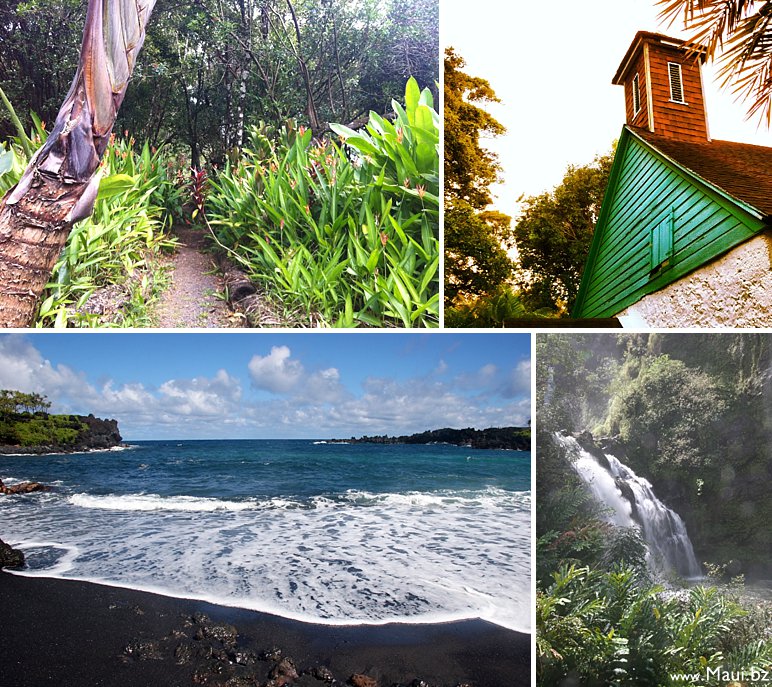
Enjoyed by a portion of the two-plus million tourists who visit the Valley Isle annually – not to mention the Mauians who live here – the road appears to be carved into the coastline with a chisel, with more than one stretch of the highway shearing off to cliffs that spill into the sea three hundred feet below.
Intrigued? Here’s a brief history of Maui’s most fabled road.
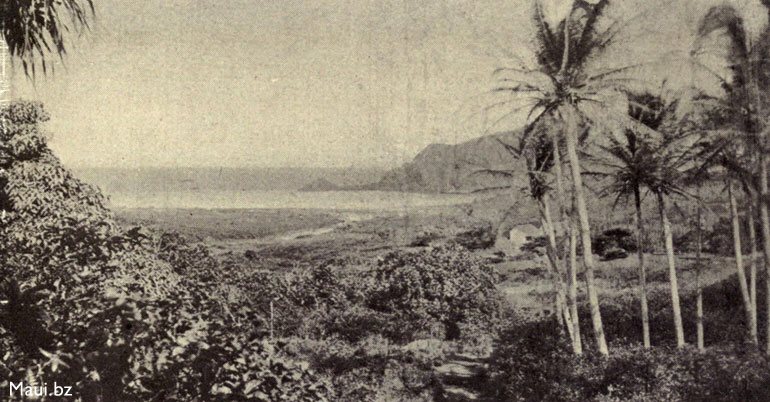
Up until the 14th century, Maui was divided into three distinct regions, where each was ruled by a separate ali’i.
King Pi’ilani – considered a descendant of some of Maui’s most legendary figures, including the God of Light, Wakea – reigned as the 15th Mo’i of Maui, with control over the island’s western region. Widely known as benevolent, Pi’ilani assumed rule of Hana on the east side through marriage. With the small, heavenly town within his political realm, he began construction on King’s Road, a path that served as the precursor to Hana Highway.
Traversing the jagged coastline of La Perouse and the lush wilderness of Kahakuloa, the famed trail ultimately went down in history as the only road to encircle an entire island in the whole Hawaiian archipelago – calling to mind why this era of profound achievements was deemed The Golden Years in Maui’s history.
King Pi’ilani was at the helm of it all, building fishponds, irrigation systems, and Piilanihale – what stands today as the largest heiau, or sacred temple, in all of Hawaii.
Upon the great chief’s death, his son Kiha-a-pi’ilani took it upon himself to complete and preserve his father’s legacy.
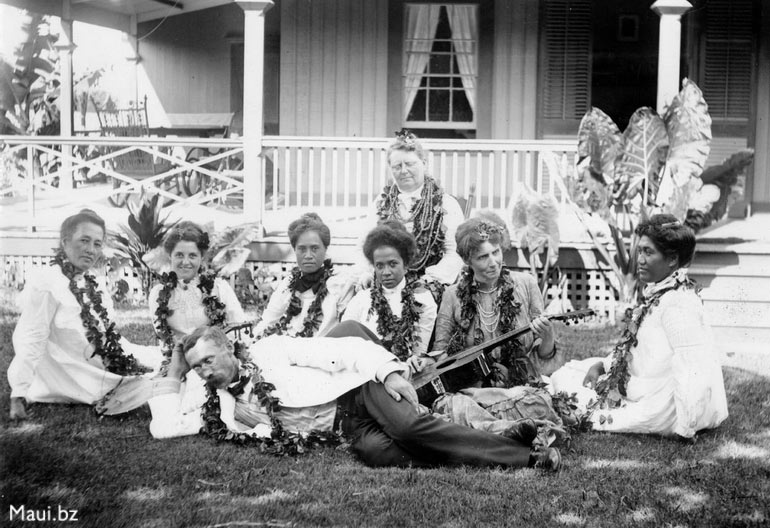
Known as an alaloa, or, literally, “long road,” Kiha-a-pi’ilani extended the trail from Hana’s coastline to the Kaupo Gap on Haleakala’s desolate, cinder-rich slopes. Stretching 138 miles long and taking visitors through terrain as vastly diverse as rainforests, lava fields and acres of cacti and parched kiawe, this precipitous footpath remained the primary course for island-wide crossing for the next 250 years. As for navigating the gulches before bridges were implemented? Local lore claims that vines were used to swing across the gullies.
Modern road construction began in Hana and all of Maui during the sugarcane boom in the late 1800s, when the original footpath became part of a system of roads called the “Alanui Aupuni,” or Government Roads.
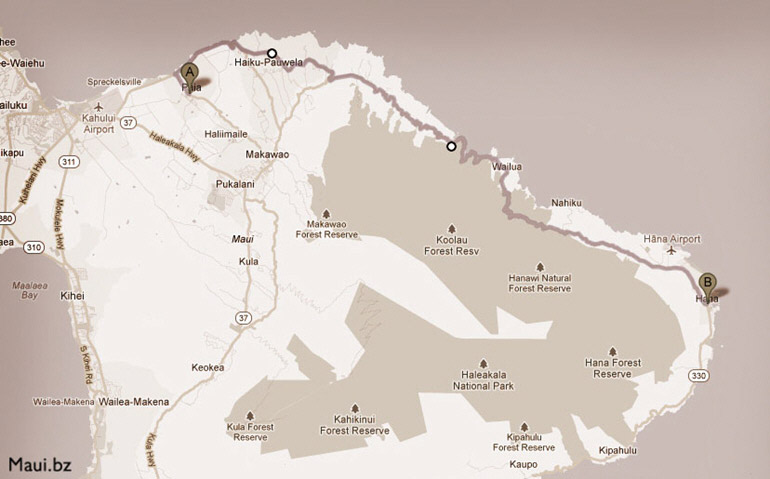
It was during this time, and partly prior, that canals were constructed to deliver eastern Maui’s ample water to plantations around the island. Laborers from China were enlisted to take part in this construction, paving the way for a Chinese-run store on the taro-rich Ke’anae Peninsula. Popularly considered the halfway point to Hana, Ke’anae went on to become a prison camp that held three guards and twenty-two prisoners; today, the site serves as an outpost for the YMCA.
It was these prisoners that comprised part of the labor force to build what we know today as the only path to the town of Hana – a place once so remote that it could only be reached by canoe, steam barge, horseback or foot.
The original path, having fallen into disrepair during the twenty-year rule of Hana by Kalani’opu’u of the Big Island, was restored and broadened by prisoners. They also set out to assist with the building of Hana’s legendary bridges – effectively doing away with the need for vine and coconut-fiber ropes.
Consider their efforts nothing short of remarkable.
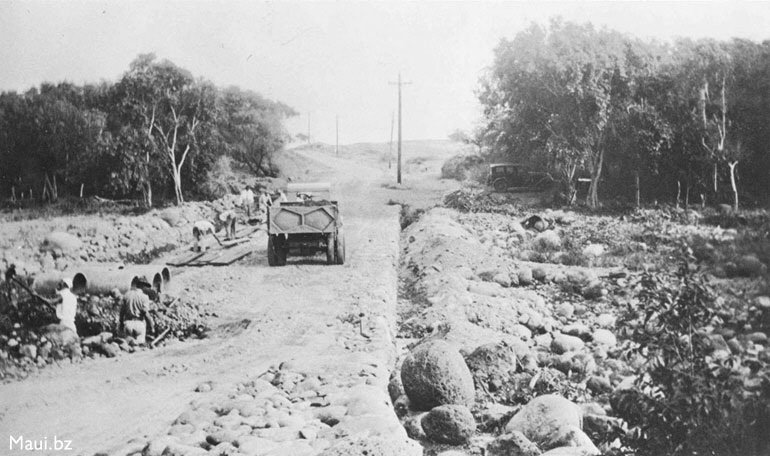
Today, all but one of the original bridges remain; the one that had to be replaced was due to significant erosion. (Nor does its substitute have a shabby reputation – the steel bailey bridge was brought in by the United States Army Corps of Engineers.) Dynamite was used to blast the trail, with crew members often lowered in on ropes over cliff faces.
One lane and composed of gravel, the road to Hana was officially completed in 1926 – the same year that the first bookmobile in Hawaii hit the streets, it being a rumble-seat Ford Roadster, and roughly four hundred years after King Pi’ilani’s birth. The opening was celebrated with a two-day luau in Hana; it would take another forty years for the road to be paved.
To drive the road to Hana today is to feel the ancient ache of challenging labor and hazardous conditions, rendering the journey all the more exquisite.

Jungles of bamboo, ginger, and ‘ohia frame the ancient road, while waterfalls surge from the cliffs in spectacular shows of nature. Beyond the remarkable bridges, beautiful beaches, and vistas so striking they seem unreal, the road to Hana is home to a number of reminders of Maui’s rich past – from Queen Ka’ahumanu’s birthplace in a cave on Ka’uiki Hill to Charles Lindbergh’s grave at Palapala Ho’omau Church Cemetery in Kipahulu. In 2001, the US government took note when Pi’ilani’s original dream joined the ranks of Nevada’s renowned “Welcome to Fabulous Las Vegas” marquee, California’s John Steinbeck House and Yosemite’s Ahwahnee Hotel on the United States’ National Register of Historic Places.
As for the ali’i who initiated Maui’s unification – on the road and in spirit – he continues to live on in Pi’ilani Highway, an oft-serpentine drive that begins at Kalepa Bridge and extends to the southern shores of the island. Otherwise known as the “back road to Hana,” King’s Road takes contemporary drivers over a narrow, cliff-hugging route – complete with blind turns and pin-thin sections – to deliver them to a landscape so barren and alienesque, and then bucolic, visitors may think they’ve stepped into a dream. And indeed, in many ways they have.
While there are a handful of guidebooks and apps to direct you along Hana Highway, some outlets encourage visitors to stop at sites located on private property or sites that are culturally sensitive. Traveling with a local guide is the best way to avoid making a negative impact.


